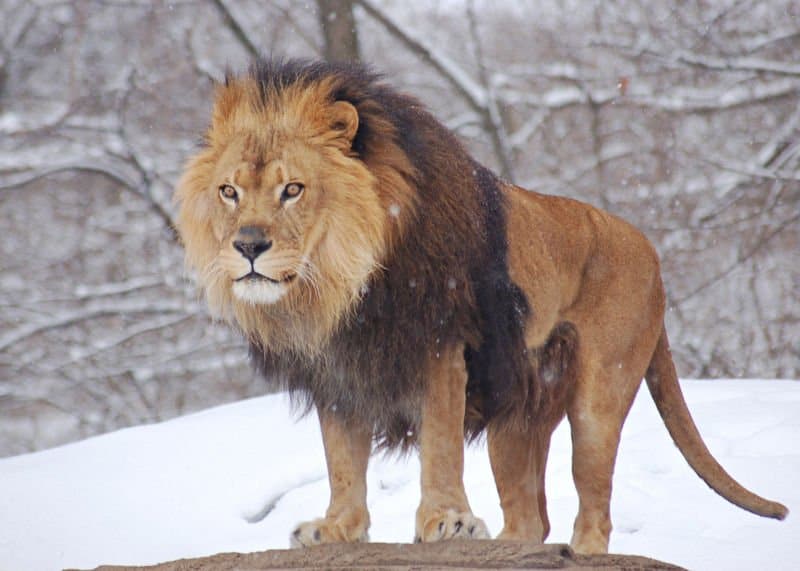Located in the Chicago suburb of Brookfield, the Brookfield Zoo, also known as the Chicago Zoological Park, is one of the best zoos and zoological societies in the country. Encompassing more than 200 acres, the Brookfield Zoo is home to more than 500 species and over 3,400 animals in total. It features animals from around the globe, including many mammals, birds, reptiles, and amphibians! This multi-award-winning zoo is a great experience for the whole family and provides fun events for every season. Learn more about the Brookfield Zoo, including the ideal time to visit and the amazing animals you will encounter.
Why is the Brookfield Zoo Famous?
The Brookfield Zoo is an impressive conservation and preservation attraction in Illinois. It opened its doors in 1934 and receives more than two million visitors each year. Operated by the Chicago Zoological Society, this zoo is known for its use of open-air and unbarred enclosures throughout the facility. This enclosure style provides a better natural environment for the animals.
Best Time to Go to the Brookfield Zoo
The best time to go to the Brookfield Zoo is early in the day on weekdays. For the best experience with fewer crowds, arrive shortly after they open at 10 a.m. between Monday and Thursday. The zoo occasionally offers free days, which is great for those on a budget, but it is typically overcrowded. Special events for Halloween and the holiday season can also be pretty busy. Spring and summer are also busier, so aim for fall or winter. You may have a better chance of seeing more animals when the weather is cooler.
Amazing Animals to See at the Brookfield Zoo
Blue-Throated Macaw
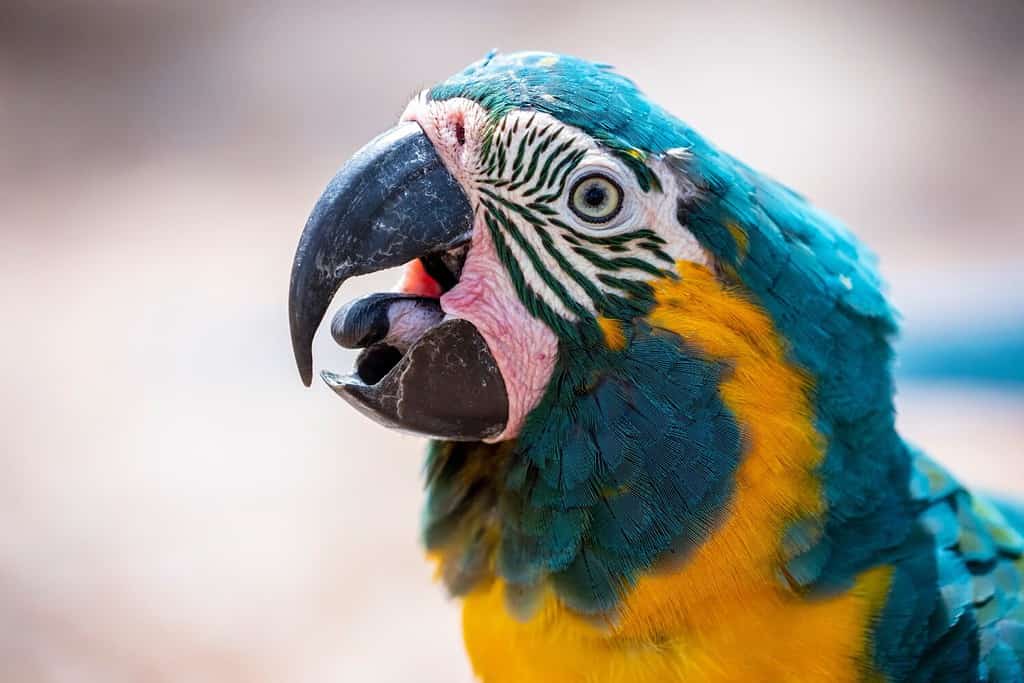
Blue-throated macaws are a critically endangered species.
©Danny Ye/Shutterstock.com
Native to the grasslands, forests, and marshes of Northern Bolivia, the blue-throated macaw is a critically endangered species in the wild. These birds have unique turquoise and bright yellow plumage, and they eat fruit from palm trees. You will find these macaws flying around, walking on the ground, or climbing trees in their enclosure.
African Lion
What’s one of the animals most people look forward to seeing at the zoo? Lions! These majestic creatures weigh up to 400 pounds and have enormous teeth and massive paws. African lions live in the grassy plains and savannahs from the Southern Sahara to South Africa. In the wild, lions hunt wildebeest, antelope, and other large mammals. In the zoo, they are fed a diet of chunk horse meat, mammal carcasses, and shank bones.
Frilled Lizard
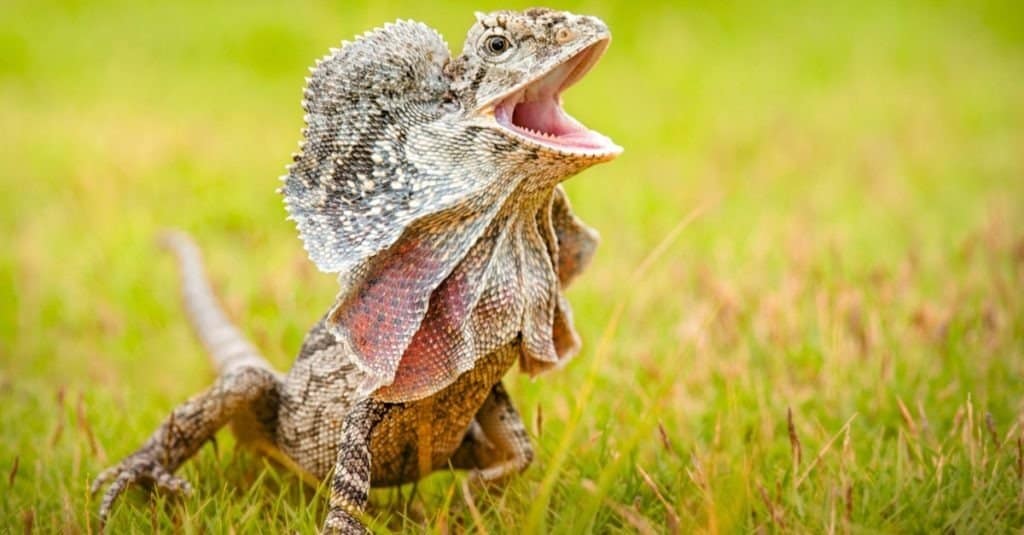
Frilled lizards are native to Australia.
©Hadrani Hasan/Shutterstock.com
One of Australia’s most iconic species, the frilled lizard features a frill that opens during mating and courtship displays or to deter potential predators. These lizards hide in trees, using the vegetation to camouflage their bodies as they hunt for insects, spiders, and smaller lizards. They live in forests across Australia, where they are famous for their scare tactics – standing on two legs and charging at predators before dashing up a tree.
Humboldt Penguin

Humboldt penguins can swim up to 17 miles per hour.
©brunocoelho/Shutterstock.com
Located on the rocky shores and coastal islands of Peru and Chile, Humboldt penguins have unique adaptations that allow them to thrive in their environment. They are fashioned with a thick layer of fat to keep them warm and torpedo-shaped bodies that allow them to move swiftly underwater, up to 17 miles per hour.
Polar Bear
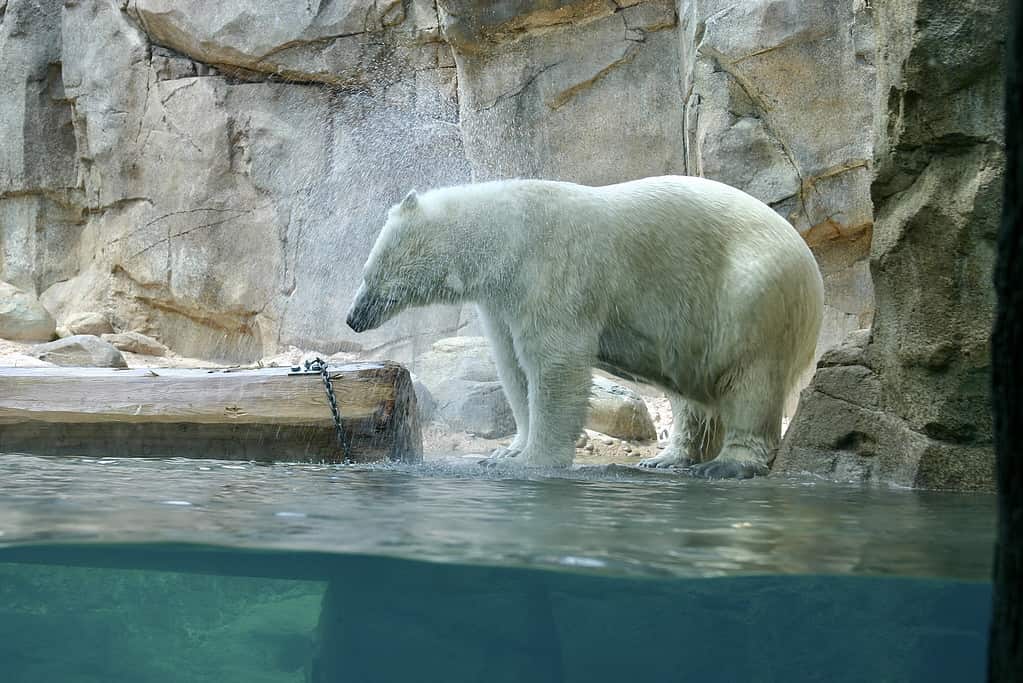
Polar bears
eat abundant fish at Brookfield Zoo.
©Wirestock Creators/Shutterstock.com
As the largest, most ferocious bears on Earth, polar bears can exceed 1,700 pounds and reach heights of 11 feet when standing on their hind legs. They live in the Arctic regions of Canada, Alaska, Russia, Greenland, and Norway. This species is vulnerable in the wild due to climate change. Their wild diet includes seals, seabirds, and fish, while their zoo diet consists of herring, trout, and other fish.
Andean Cock-of-the-Rock
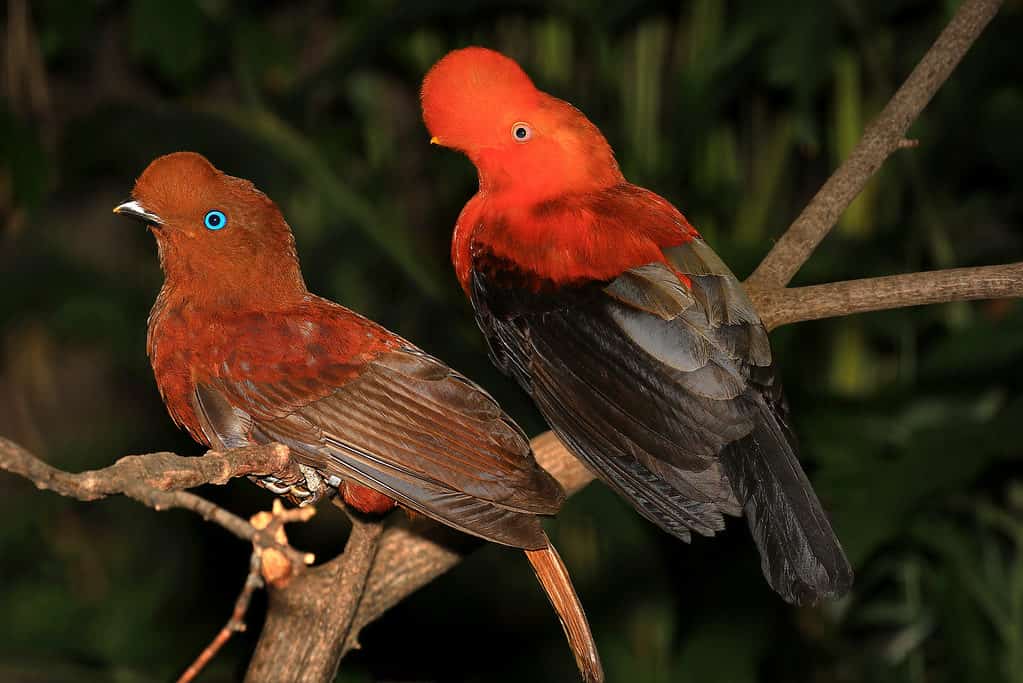
The Andean cock-of-the-rock is famous for its crest.
©John L. Absher/Shutterstock.com
These unusually named birds live on the rocky cliffs and rainforest ravines of the Andes Mountains in Western South America. It is the national bird of Peru and is famous for its interesting crest, wide eyes, and bright plumage.
Green Tree Python
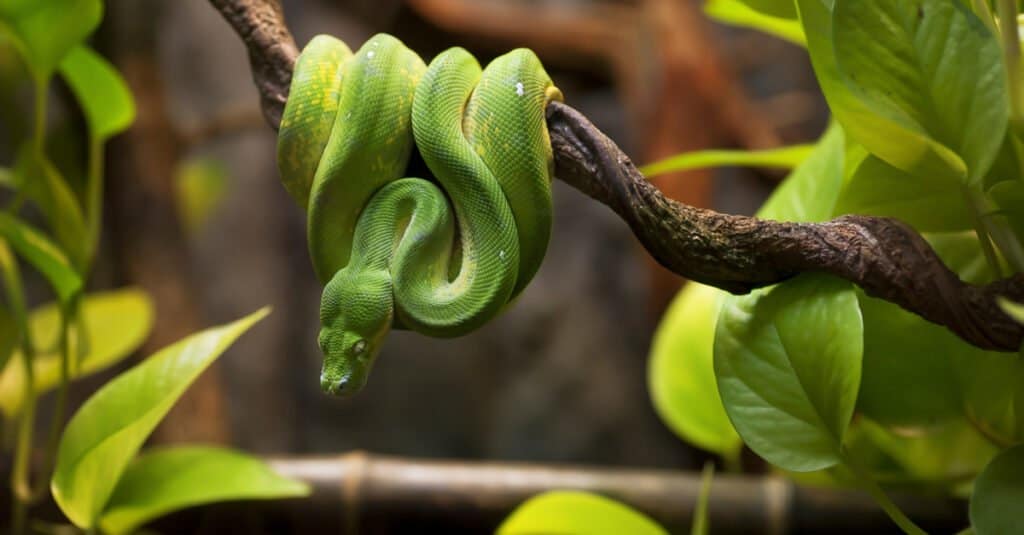
Green tree pythons are native to New Guinea and eastern Indonesia.
©Tom_Deer/Shutterstock.com
Growing up to seven feet long, the green tree python is a remarkable creature native to the rainforests and monsoon forests of New Guinea and the surrounding islands. You can easily recognize it by its emerald, green scales and dull yellow spots.
Hoffman’s Two-Toed Sloth
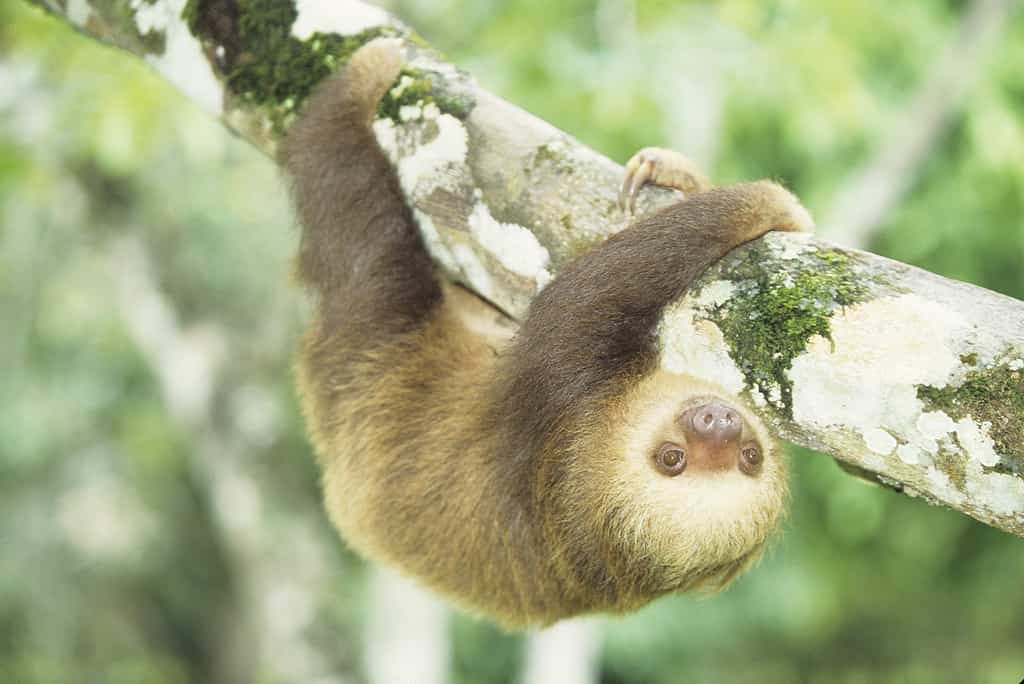
Hoffman’s two-toed sloth is native to tropical rainforests.
©Tom Brakefield/Stockbyte via Getty Images
Native to the tropical rainforests of South America, Hoffman’s two-toed sloth is a slow-moving and cuddly-looking mammal. In the wild, these sloths consume leaves, twigs, and fruit, and in the zoo, they are fed a diet of lettuce, spinach, sweet potatoes, and canned primate food.
The photo featured at the top of this post is © Danny Ye/Shutterstock.com
Thank you for reading! Have some feedback for us? Contact the AZ Animals editorial team.



